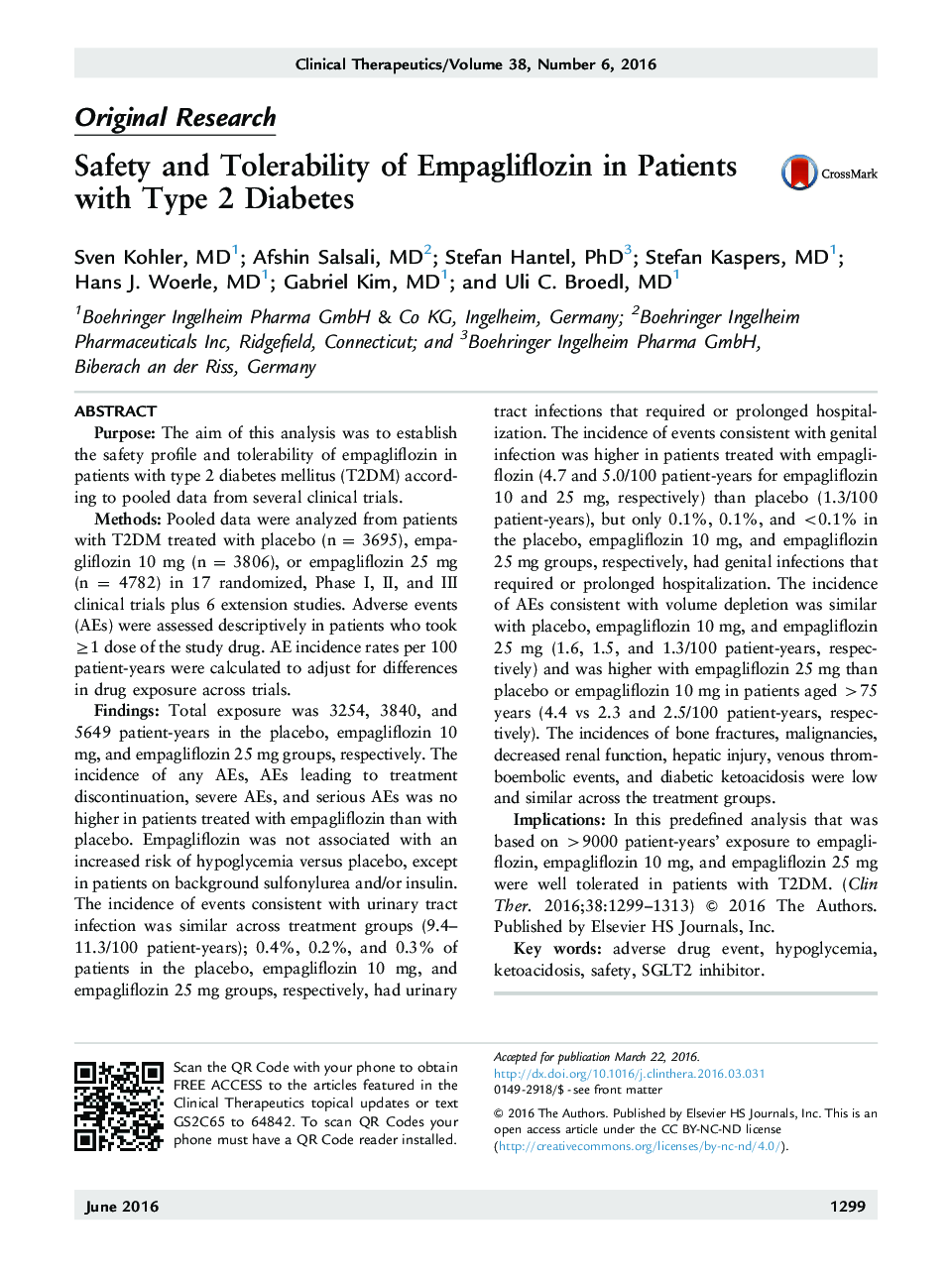| Article ID | Journal | Published Year | Pages | File Type |
|---|---|---|---|---|
| 5824442 | Clinical Therapeutics | 2016 | 15 Pages |
PurposeThe aim of this analysis was to establish the safety profile and tolerability of empagliflozin in patients with type 2 diabetes mellitus (T2DM) according to pooled data from several clinical trials.MethodsPooled data were analyzed from patients with T2DM treated with placebo (n = 3695), empagliflozin 10 mg (n = 3806), or empagliflozin 25 mg (n = 4782) in 17 randomized, Phase I, II, and III clinical trials plus 6 extension studies. Adverse events (AEs) were assessed descriptively in patients who took â¥1 dose of the study drug. AE incidence rates per 100 patient-years were calculated to adjust for differences in drug exposure across trials.FindingsTotal exposure was 3254, 3840, and 5649 patient-years in the placebo, empagliflozin 10 mg, and empagliflozin 25 mg groups, respectively. The incidence of any AEs, AEs leading to treatment discontinuation, severe AEs, and serious AEs was no higher in patients treated with empagliflozin than with placebo. Empagliflozin was not associated with an increased risk of hypoglycemia versus placebo, except in patients on background sulfonylurea and/or insulin. The incidence of events consistent with urinary tract infection was similar across treatment groups (9.4-11.3/100 patient-years); 0.4%, 0.2%, and 0.3% of patients in the placebo, empagliflozin 10 mg, and empagliflozin 25 mg groups, respectively, had urinary tract infections that required or prolonged hospitalization. The incidence of events consistent with genital infection was higher in patients treated with empagliflozin (4.7 and 5.0/100 patient-years for empagliflozin 10 and 25 mg, respectively) than placebo (1.3/100 patient-years), but only 0.1%, 0.1%, and <0.1% in the placebo, empagliflozin 10 mg, and empagliflozin 25 mg groups, respectively, had genital infections that required or prolonged hospitalization. The incidence of AEs consistent with volume depletion was similar with placebo, empagliflozin 10 mg, and empagliflozin 25 mg (1.6, 1.5, and 1.3/100 patient-years, respectively) and was higher with empagliflozin 25 mg than placebo or empagliflozin 10 mg in patients aged >75 years (4.4 vs 2.3 and 2.5/100 patient-years, respectively). The incidences of bone fractures, malignancies, decreased renal function, hepatic injury, venous thromboembolic events, and diabetic ketoacidosis were low and similar across the treatment groups.ImplicationsIn this predefined analysis that was based on >9000 patient-years' exposure to empagliflozin, empagliflozin 10 mg, and empagliflozin 25 mg were well tolerated in patients with T2DM.
